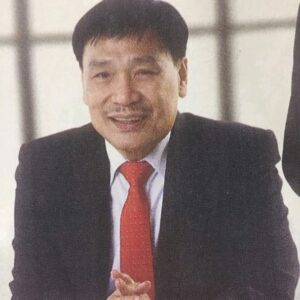April 15, 2025 l Manila Bulletin

US President Donald Trump is tilting at windmills. Like it or not, his unexpected decision to hike US tariffs on imports is likely to be economically damaging in the long run. No one doubts that such a large US tariff increase is the biggest disruption in recent memory, given the pervasive uncertainties, persistent inflation, and lingering geopolitical crises in the global economy today.
Be that as it may, the sudden imposition of Trump’s tariffs definitely requires a more strategic and well-rounded approach, involving the study of pertinent economic analyses and close attention to important turning points to ensure the effective implementation of these new tariff plans. This approach will help corporate leaders navigate the economic landscape and thereby position their companies for more sustainable future growth. Even in economics, one can’t be wrong too many times in a row.
Many are concerned that Trump’s tariff was rushed through without proper study and scrutiny. Many countries are now seriously asking the USA for clearer direction, while others may simply plan to introduce reciprocal tariffs.
As it is now, the Association of Southeast Asian Nations (ASEAN) has offered a cautious response to the United States’ unilateral tariff moves; it seeks more information from the US on the reasons why President Trump recently imposed a hefty import tariff increase on ASEAN members. Let’s recall each ASEAN country’s percentage of tariff increase: Cambodia at 49 percent, Vietnam at 46 percent, Thailand at 36 percent, Indonesia at 32 percent, Malaysia at 24 percent, The Philippines at 17 percent, and Singapore at 10 percent. Given such large increases, we all understand their common concern to reduce, if still possible, the increase in their US tariff expenditures.
To make matters worse, the financial repercussions of the hefty US tariff increase are spreading in global capital markets. Credit markets are freezing, equity and bond markets are plummeting, and some financial institutions are seriously concerned about the possible deterioration of their respective balance sheets. Even if the current economic growth driver, like consumption, is still holding up for now, in the long run this tariff problem will be more difficult to fix.
Unforeseen, yes; enforceable, no. Things could happen to make the new tariff turn out far better or far worse than what President Trump might reasonably expect, particularly if the assumptions or justifications he used turn out to be wrong. Fortunately, at the moment, possibly due to the alarming drop in equities and fixed-income investments in the US capital market, President Trump immediately postponed the implementation of his new US tariff increase for 90 days. The US Fed, considered by many to be the de facto US central bank, might want to give serious attention to this issue now.
Most importantly, let’s watch the money supply. When the money supply starts to rise, inflation becomes a much bigger risk. This whole issue also highlights the delicate balancing act on the part of many central bankers as they address the huge US tariff increase.
Effective leadership and efficient management are always deemed critical by management experts in the execution of any major corporate decision. Top management, by and large, must have capable teams, delegate clear responsibilities, and empower key players to contribute skills and insights to the implementation of any given plan. Regular feedback loops must ensure that the plan stays on course and adapts well to the problems being addressed.
As is usually the case, just be realistic about the downside impact of any big decision made; expect the worst-case scenario to be much more severe than anticipated. This seems trivial, but it’s really more than that.
***The views expressed herein are his own and do not necessarily reflect the opinion of his office as well as FINEX. For comments, email abelardo.cortez7@gmail.com. Photo is from Pinterest.

